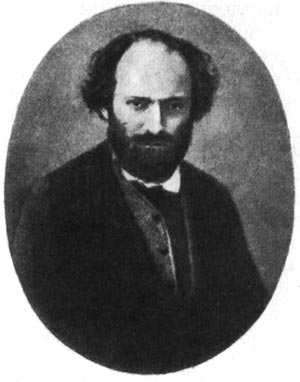impressionist-ART.com
Impressionism & Post-Impressionism
Paul Cézanne 1839–1906
 Paul Cezanne 1870s |
The thinker artist, Cezanne formulated the philosophical foundations of painting and tried to convey the eternal laws of life through artistic means. “For several generations of painters have been fed three apples of Cezanne,” exclaimed German artist Georg Gross at the dawn of the twentieth century.
In the early period of his work, Cezanne came into contact with impressionism and received a lot from working together with Camille Pissarro (“The Road to Pontoise”, 1875). However, Cezanne was not interested in fleeting impressions, the transmission of which fascinated the impressionists: the master turns to an analysis of nature, achieving "something more stable, eternal, like the art of museums."

Self Portrait in
front of olive wallpaper
1881
After the third exhibition of the Impressionists, in which his work was particularly harshly criticized, a disappointed Cézanne leaves for the south of France in Ex. Confident of the correctness of his path, he stubbornly continues his daily work with "full-scale motives." “I wanted to copy nature, but I did not succeed ... The sun cannot be reproduced, but it can be imagined ... with the help of paint,” the master admitted.
In his paintings, Cezanne deliberately simplifies the shape of objects, turning houses into cubes, fraternities into cones and cylinders. In his still lifes, ordinary household items: teapots, sugar bowls, tablecloths acquire monumentality. “Treat nature with a ball, cone, cylinder ... Lines parallel to the horizon convey the extent; perpendicular lines give depth. ” Cezanne followed this famous thesis not only when creating landscapes, but also when he turned to the image of the human body. Bathers, players, smokers Cezanne find themselves torn from the context of time and space and turn into a master’s reflection on the nature of human existence. The essence of these images was precisely described by Lionello Venturi: they are "individual as a portrait and universal as an idea." For Cezanne, the real motive always remains only an occasion to show the majestic processes of the geological structure of the world, which is manifested both in a clear organization of spatial plans and in a generalized interpretation of volumes. The artist relies on our understanding that the whole visible world is a combination of different incarnations of a single material substance subject to universal laws.